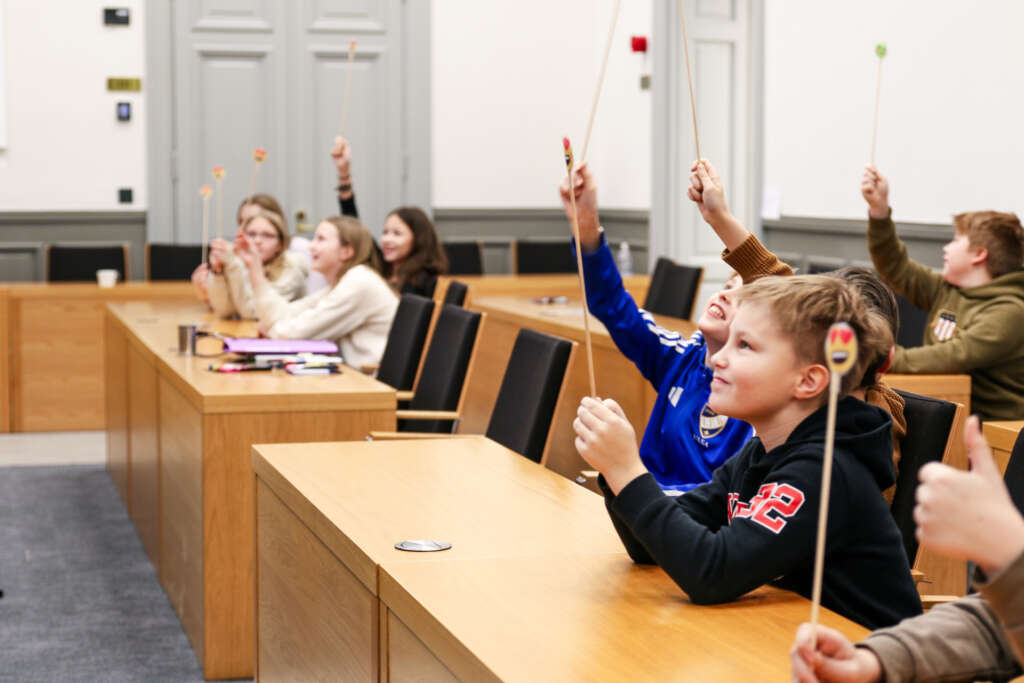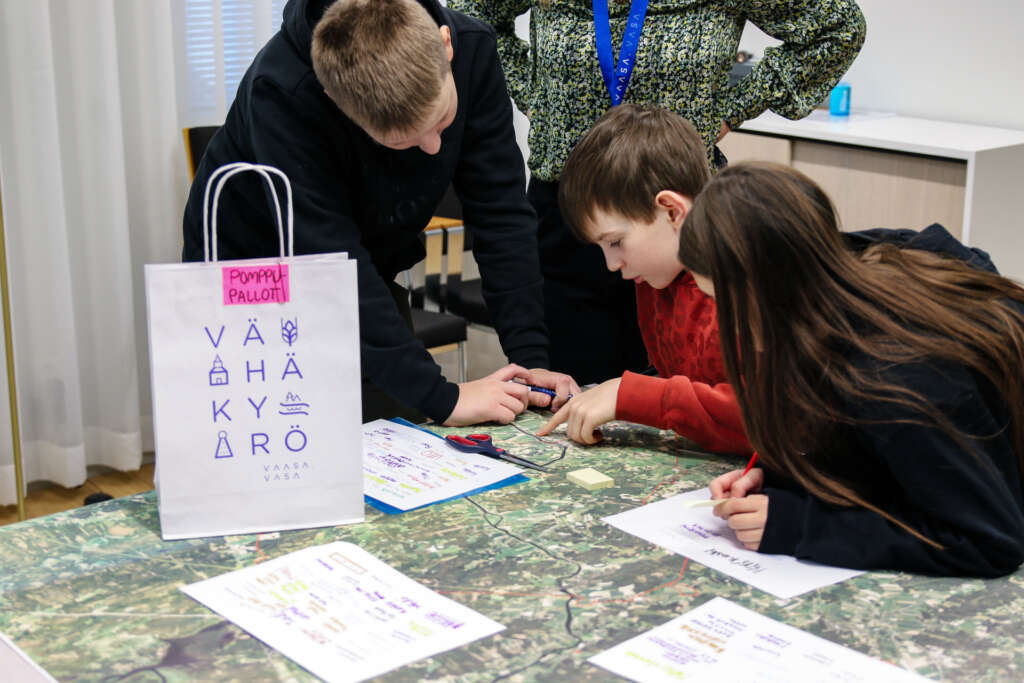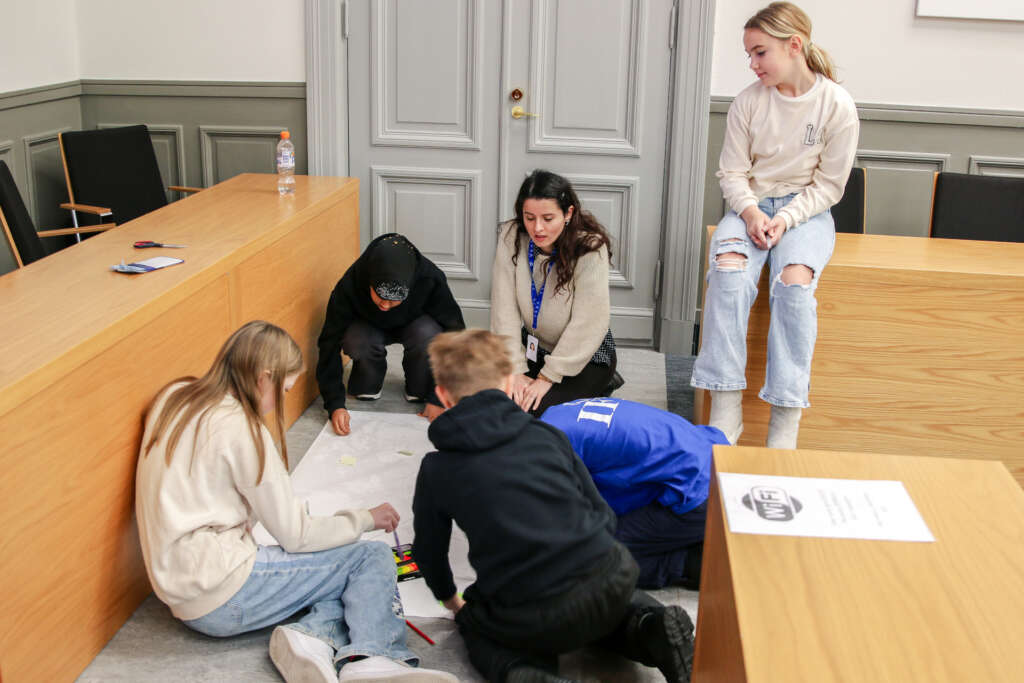
Article categories: Archive News
The future of Vaasa was envisioned in Children’s Participation Day
Published: 8.12.2023
What is a master plan? Where would you like to live and how will people move around Vaasa in 2040? These were some of the questions discussed by fifth and sixth graders at the Children’s Participation Day at the Administration Building in Vaasa.
On 16 and 21 November, primary school children in Vaasa got to discover the city’s decision-making process at Vaasa’s Administrative Building. Participants included the 5th-6th grade of Tervajoki school and the 5th grade of Haga skola.
For example, the children were able to learn about the City of Vaasa’s 2040 master plan and share their ideas on it.
– The master plan is the plan for the whole city. Its purpose is to guide and coordinate the overall design of the city’s various activities, such as housing, jobs, services, green spaces, and recreational areas, says Lauri Ovaska, the city’s master planner.
Here are some of the ideas on the Vaasa Master Plan 2040 from the 5th-6th grade at Tervajoki School:
- More services in Vähäkyrö, such as a shopping centre and municipal services
- Residential areas close to services in Tervajoki and Vaasa.
- In 2040, people in the Vaasa and Vähäkyrö area will move around by private cars and public transport, such as local trains and water taxis or buses.
- In 2040, electricity in Vaasa will be produced from renewable energy sources such as wind, sound waves, wood, and hydropower. The environment will be taken into account by sorting rubbish into bins and by building a waste treatment plant in Vähäkyrö.
Haga skola 5th graders’ ideas on Vaasa’s Master Plan 2040:
- Vaasa’s best attractions: the ruins of Old Vaasa and Old Vaasa in general
- Where would you like to live in 2040: at home, in Old Vaasa, in Gerby, near Öjberget, in Höstvesi, or in Haapaniemi
- How to get around and travel in Vaasa in 2040: flying car, car, bus, walking

Developing the children’s ideas
Children’s suggestions and ideas will now be discussed by the Youth Council and the Vähäkyrö Regional Council, among others. Where possible, the input from the day will also be used in the planning of the master plan.
– The ideas from the children are valuable and will complement the other interaction we carried out in the early stages of the plan, says Ovaska.
Children’s panels in the spring
In addition to the children’s participation day, pupils from Haga Skola and Tervajoki school will have the opportunity to take part in a children’s panel in the spring.
The Children’s Panel is a new model for bringing children’s perspectives into the planning and decision-making process of City of Vaasa projects. The city takes the children’s panel to where the children are, visiting them in schools and daycare centres, and giving them the opportunity to share their views on current projects in the city.

Vaasa has joined the Child-friendly Municipality model
The City of Vaasa is involved in UNICEF’s Child Friendly Municipality model. Children’s rights include the right of every child and young person to be heard and to have a say in matters that affect them.
The Child-Friendly Municipality model is a tool provided by UNICEF for municipalities. After two years of development work, a municipality can be awarded the Child-Friendly Municipality label.
How can children make a difference in Vaasa?
- Children’s Participation Day gives 5th-6th graders an introduction to the city’s decision-making process and the different ways to get involved. It is organised annually in October-November.
- Classes visit the City Council Hall in Vaasa’s Administration Building, and during the visit, children can be asked to give their opinions on a topical issue, for example through a workshop or a questionnaire.
- The Children’s Council is a channel for primary school and daycare-age children to bring topical issues from different city departments to the children for discussion and debate.
- The workshop takes place in the group’s own classroom/room and is run jointly by a city employee and the group’s own teacher.
